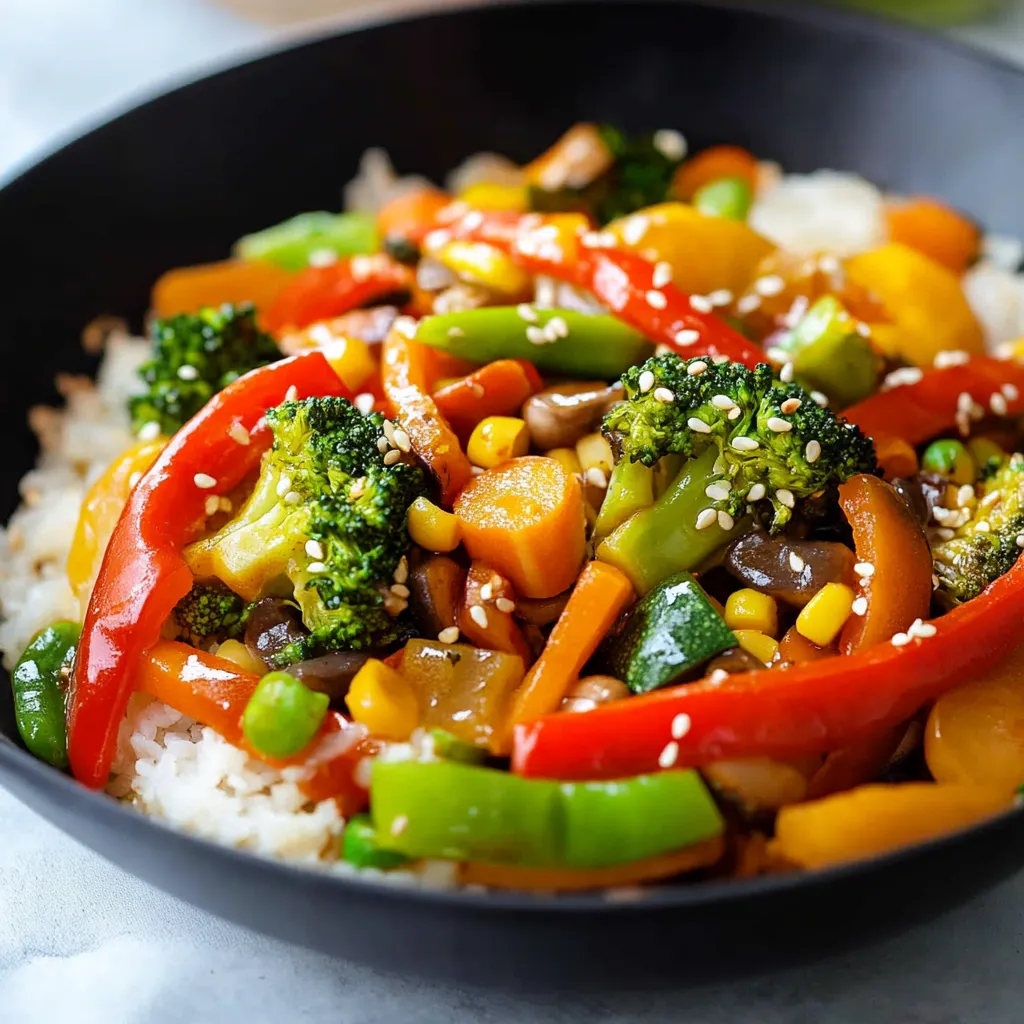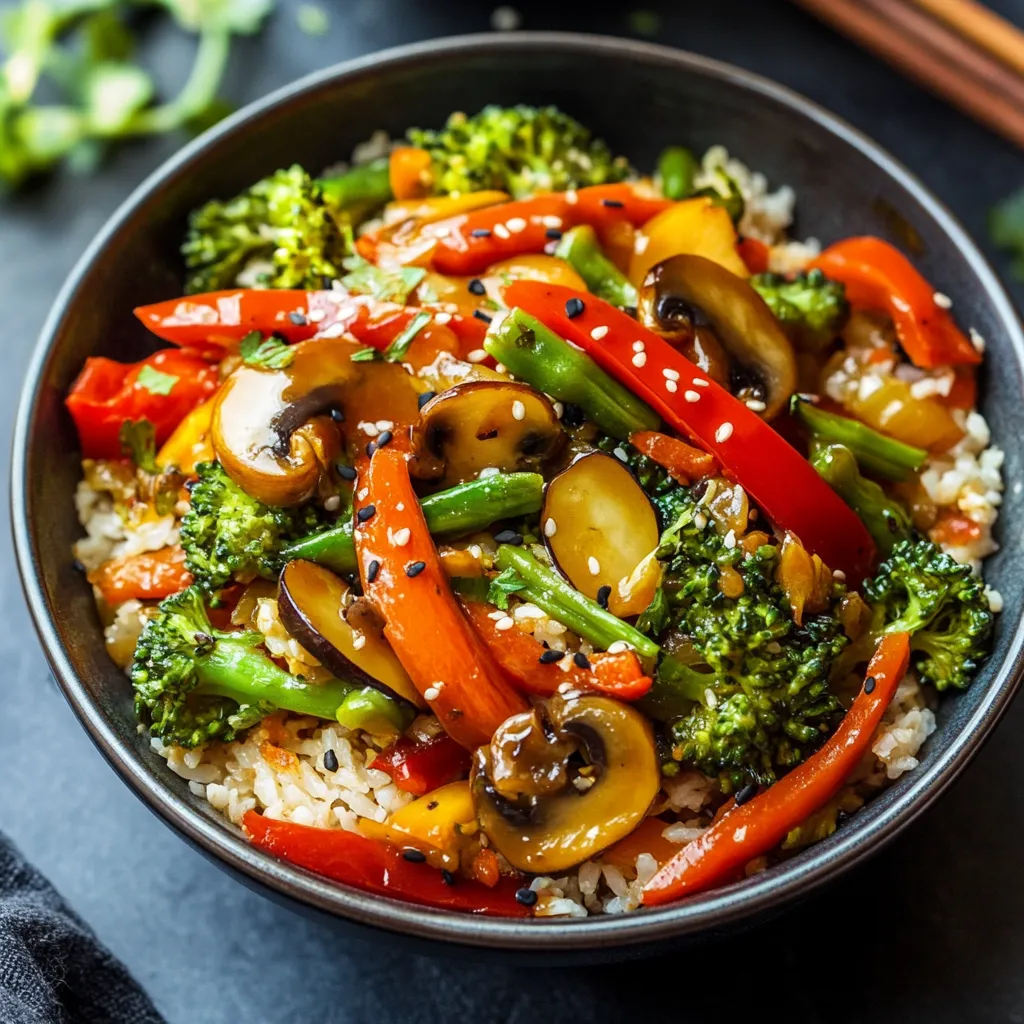 Pin it
Pin it
Turn everyday veggies into a colorful, flavorful stir-fry that beats takeout any day. This adaptable meal pairs crisp veggies with a thick, homemade sauce that wraps around each bite just right.
I've played with different stir-fry methods for years and found that getting the timing right and nailing the sauce thickness makes all the difference. This has become what my family asks for when we're short on time.
Key Ingredients Breakdown:
- Vegetables: Go for crisp, fresh options
- Ginger: Use only fresh, not from a jar
- Soy Sauce: Pick low-sodium for better taste control
- Garlic: Mince your own fresh cloves
- Sesame Oil: Grab the toasted kind only
- Oil: Something that can take heat like canola or peanut
- Cornstarch: Needed to make sauce thick
Cooking Walkthrough:
- Making Your Sauce:
- Mix soy sauce, toasted sesame oil, fresh minced garlic, grated ginger, and brown sugar in a bowl. Stir cornstarch with cold water until smooth, then add to your sauce mix. Put aside.
- Getting Veggies Ready:
- Cut everything about the same size so they cook evenly. Group them by how long they need to cook: tough ones first (carrots, broccoli), middle ones next (mushrooms, bell peppers), quick ones last (snow peas).
- First Cooking Step:
- Get a big wok or pan super hot. Add your oil and wait till it shimmers. Toss in the toughest veggies like carrots and broccoli first.
- Second Cooking Step:
- After about 2-3 minutes, throw in your medium-cooking veggies. Keep everything moving in the pan. You should hear a nice sizzle with each piece.
- Last Cooking Step:
- Add the quick-cooking veggies. Keep stir-frying until everything's tender but still has some crunch, roughly 5-6 minutes total.
- Finishing With Sauce:
- Pour your sauce around the sides of the pan and let it run down. Quickly toss everything to coat. Cook until the sauce gets shiny and thick.
 Pin it
Pin it
Good prep makes all the difference in stir-frying. My grandma always told me to set up my veggies like an artist arranges their palette.
Managing Your Wok Heat
Getting the heat just right makes veggies cook fast but stay crunchy. Don't pour cold sauce into a super hot pan - it should be just warm when added. Cook veggies with high flame, then drop to medium-high when thickening your sauce.
Nailing The Sauce Texture
Let your sauce bubble gently while you stir it non-stop until it sticks to the back of your spoon. It should look shiny and cling to the veggies without getting too sticky.
Keeping Leftovers Fresh
Store what's left in a sealed container for up to 3 days. Heat it up fast in a hot wok to keep some crunch. Don't try freezing it or your veggies will turn soggy.
What To Serve It With
Put it on top of rice or noodles. Add some tofu, chicken or shrimp to make it a full meal. Sprinkle green onions and sesame seeds on top before serving.
 Pin it
Pin it
I turn to this method whenever I've got seasonal veggies on hand. The simple sauce and cooking style can turn practically any combo of vegetables into something that tastes way better than what you'd get delivered.
Frequently Asked Questions
- → Can I use frozen veggies?
- Absolutely, just let them defrost and drain so the stir fry doesn’t turn watery.
- → Is there a gluten-free option?
- Switch soy sauce with tamari for a gluten-free alternative.
- → Can I prep this in advance?
- Chop all the veggies up to 2 days before and keep them packed airtight.
- → What protein pairs well?
- Tofu, chicken, shrimp, or beef fit perfectly. Cook the protein first, then mix it in.
- → How should I store leftovers?
- Keep them in the fridge for 3 days max. Reheat quickly in a wok for the best texture.
